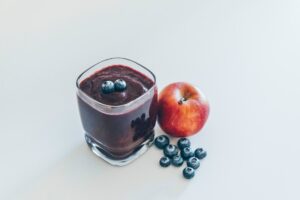Beautiful Plants For Your Interior
Thermogenesis is the process by which the body generates heat, typically through the metabolism of food and the conversion of stored energy into heat. This process plays a crucial role in regulating body temperature and maintaining overall metabolic function. Metabolic rate, on the other hand, refers to the rate at which the body expends energy at rest. Understanding these concepts is essential for anyone looking to optimize their metabolism and achieve their fitness goals.
When it comes to thermogenesis, there are two main types to consider: non-exercise activity thermogenesis (NEAT) and exercise-induced thermogenesis (EAT). NEAT encompasses all the energy expended for everything we do that is not sleeping, eating, or sports-like exercise. This includes activities such as walking, standing, fidgeting, and even laughing. EAT, on the other hand, refers to the energy expended during exercise or physical activity. By understanding these different forms of thermogenesis, individuals can make informed decisions about how to best optimize their metabolic rate and overall energy expenditure.
Incorporating High-Intensity Interval Training (HIIT) into Your Workout Routine
High-Intensity Interval Training (HIIT) has gained popularity in recent years for its ability to effectively boost metabolism and burn calories in a shorter amount of time compared to traditional steady-state cardio. HIIT involves short bursts of intense exercise followed by brief periods of rest or lower-intensity activity. This type of training has been shown to increase both aerobic and anaerobic fitness, making it an efficient and effective way to improve overall metabolic function.
Incorporating HIIT into your workout routine can be as simple as adding a few 20-30 minute sessions per week. This could include exercises such as sprints, burpees, jump squats, or cycling intervals. The key is to push yourself to your maximum effort during the high-intensity intervals, followed by a period of active recovery. Not only does HIIT help to increase metabolic rate during the workout itself, but it also has been shown to elevate metabolism for hours after the workout is completed, known as the afterburn effect. This makes HIIT a valuable tool for those looking to optimize their metabolism and burn more calories throughout the day.
Utilizing Resistance Training to Build Lean Muscle Mass
Resistance training, also known as strength training or weightlifting, is another essential component of any comprehensive fitness routine aimed at optimizing metabolism. Building lean muscle mass through resistance training can have a significant impact on metabolic rate, as muscle tissue is more metabolically active than fat tissue. This means that the more muscle mass you have, the more calories your body will burn at rest.
Incorporating resistance training into your workout routine can be done using a variety of equipment such as dumbbells, barbells, resistance bands, or even just your body weight. Exercises such as squats, deadlifts, bench presses, and pull-ups are all effective for building lean muscle mass and increasing overall metabolic function. It’s important to focus on compound movements that engage multiple muscle groups at once, as these tend to be more effective for building muscle and boosting metabolism. By incorporating resistance training into your routine a few times per week, you can work towards increasing your muscle mass and optimizing your metabolic rate.
Exploring the Benefits of Cold Exposure and Cold Thermogenesis
Cold exposure and cold thermogenesis have gained attention in recent years for their potential benefits in optimizing metabolism and overall health. Cold exposure can come in various forms, including cold showers, ice baths, or simply spending time in a cold environment. When the body is exposed to cold temperatures, it must work harder to maintain its core temperature, leading to an increase in energy expenditure and metabolic rate.
In addition to boosting metabolism, cold exposure has been shown to have other potential benefits such as improved immune function, increased fat burning, and enhanced mental resilience. Cold thermogenesis has also been linked to improvements in insulin sensitivity and blood sugar regulation, making it a valuable tool for those looking to optimize their metabolic health. While cold exposure may not be suitable for everyone, incorporating some form of cold therapy into your routine could have significant benefits for overall metabolic function and well-being.
Incorporating Metabolism-Boosting Foods and Nutrients into Your Diet
In addition to exercise and lifestyle factors, diet plays a crucial role in optimizing metabolism and overall energy expenditure. Certain foods and nutrients have been shown to have metabolism-boosting properties that can support overall metabolic function. For example, foods high in protein require more energy to digest and metabolize compared to fats and carbohydrates, leading to a temporary increase in metabolic rate known as the thermic effect of food.
Other metabolism-boosting foods include spicy foods containing capsaicin, green tea containing catechins, and coffee containing caffeine. These compounds have been shown to have thermogenic properties that can increase energy expenditure and support fat burning. Additionally, nutrients such as iron, calcium, and vitamin D play essential roles in metabolic function and should be prioritized in a well-rounded diet aimed at optimizing metabolism.
Harnessing the Power of Thermogenic Supplements and Herbs
In addition to diet and exercise, certain supplements and herbs have been shown to have thermogenic properties that can support overall metabolic function. For example, green tea extract, capsaicin supplements, and caffeine have all been shown to increase energy expenditure and support fat burning. These supplements can be used in conjunction with a healthy diet and exercise routine to further enhance metabolic function.
Other herbs such as ginger, turmeric, and cayenne pepper have also been shown to have thermogenic properties that can support metabolism and overall energy expenditure. These herbs can be incorporated into meals or taken as supplements to support metabolic health. It’s important to note that while these supplements and herbs can have potential benefits for metabolism, they should be used in conjunction with a healthy lifestyle and not as a replacement for proper diet and exercise.
Prioritizing Quality Sleep for Optimal Metabolism
Finally, prioritizing quality sleep is essential for optimizing metabolism and overall energy expenditure. Sleep plays a crucial role in regulating hormones that influence appetite, energy expenditure, and metabolic function. Lack of sleep has been linked to disruptions in hormone levels such as leptin and ghrelin, which can lead to increased appetite and decreased energy expenditure.
In addition to hormone regulation, sleep is also essential for overall recovery and energy levels throughout the day. Poor sleep quality has been linked to decreased physical activity levels and increased cravings for high-calorie foods, both of which can negatively impact metabolism. By prioritizing quality sleep through consistent bedtimes, creating a relaxing sleep environment, and practicing good sleep hygiene habits, individuals can support optimal metabolic function and overall health.
In conclusion, optimizing metabolism requires a comprehensive approach that includes a combination of exercise, diet, lifestyle factors, and potentially supplements or herbs. By understanding the principles of thermogenesis and metabolic rate, individuals can make informed decisions about how to best support their metabolic health. Incorporating high-intensity interval training (HIIT), resistance training, cold exposure, metabolism-boosting foods and nutrients, thermogenic supplements and herbs, and prioritizing quality sleep are all valuable strategies for optimizing metabolism and achieving fitness goals. By taking a holistic approach to metabolic health, individuals can work towards improving their overall well-being and achieving long-term success in their fitness journey.

